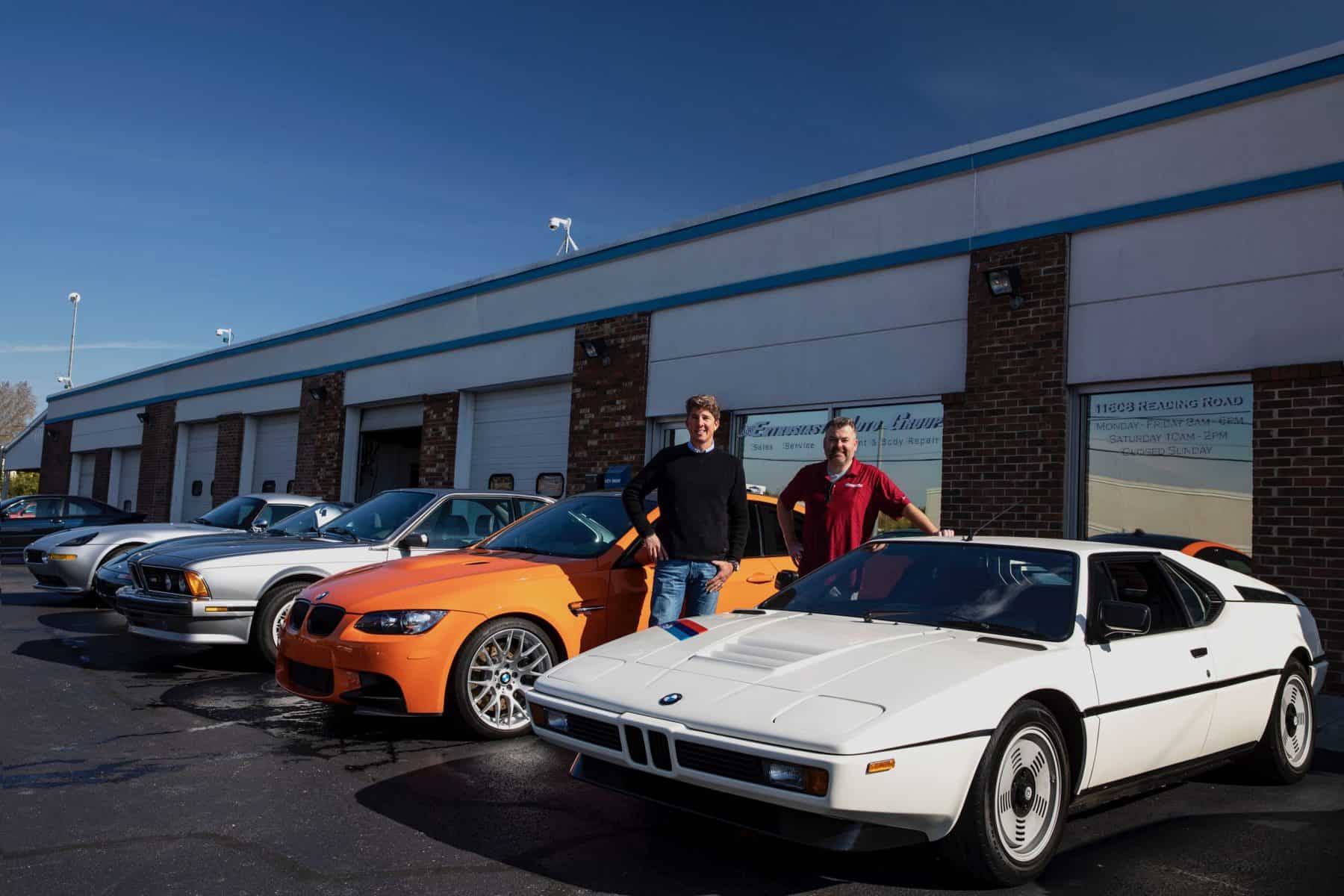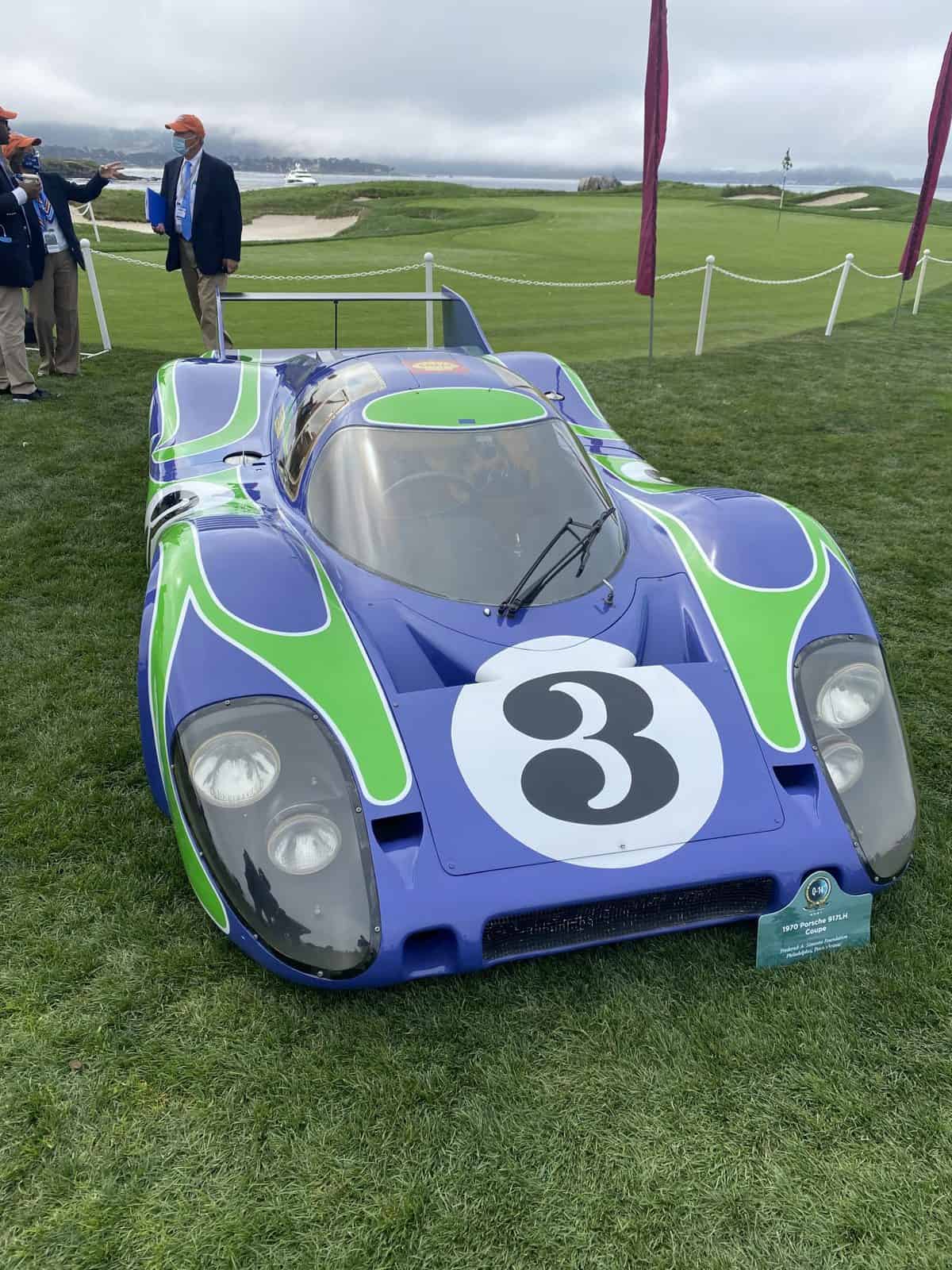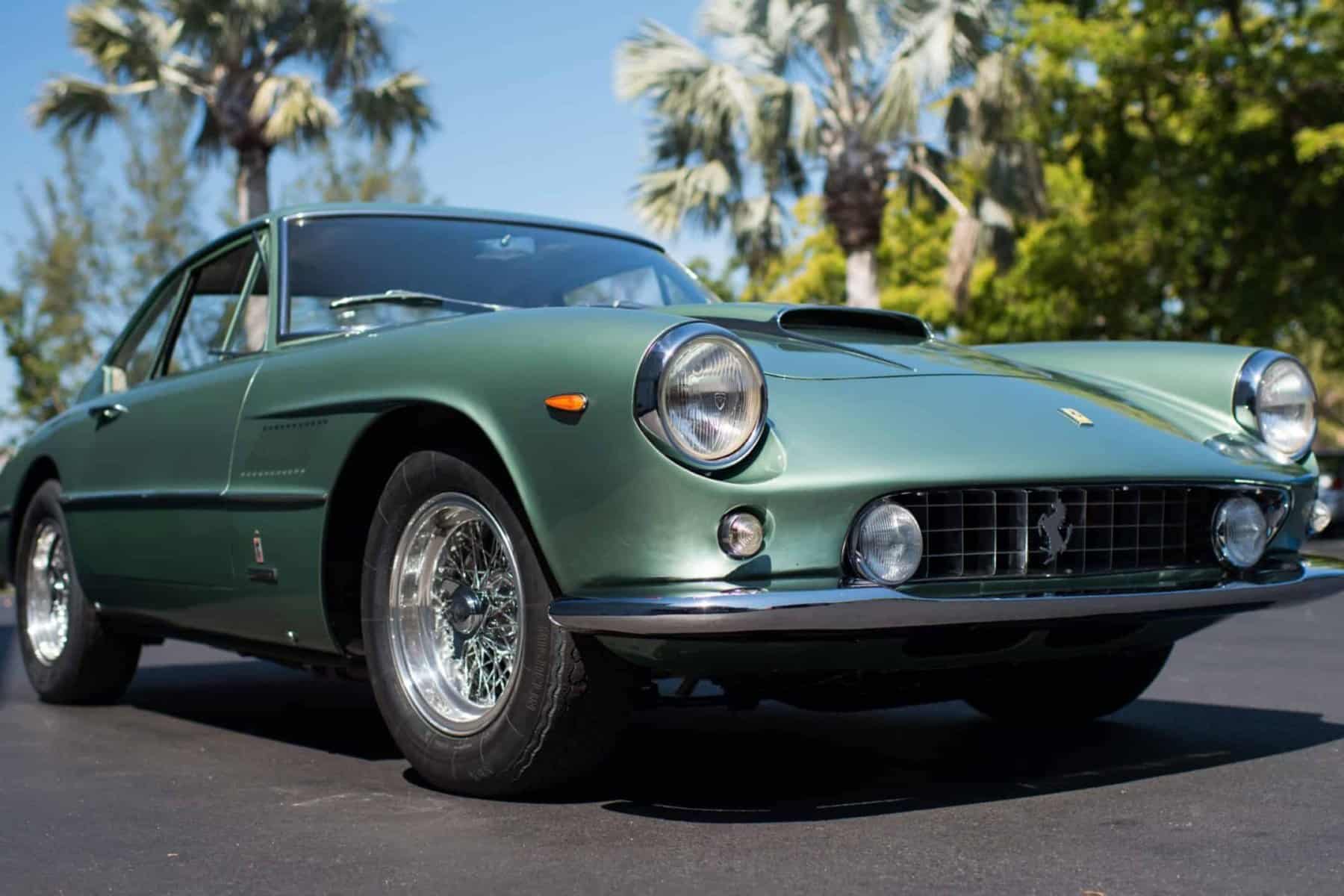2021 in the Rearview Mirror
Insight and opinion from the founder of Turtle Garage
WORDS & IMAGES: PHILIP RICHTER
TOP PHOTO: BRIAN MCCARTHY/BEARDED MUG MEDIA
Philip Richter is Co-Chairman, President and Partner of Hollow Brook Wealth Management, based in Katonah, New York, and founder of Turtle Garage. His passion for investing and collector cars come together and provide a unique perspective on 2021.
The odometer has rolled over another 365 days, and 2021 is in the books. Following the lockdowns and broad cancellations of 2020, the collector car world came roaring back to life in 2021. Radnor put on their wonderful concours d’elegance in Pennsylvania Hunt Country. Monterey Car Week restarted, and Pebble Beach was as big as ever.
We were lucky to attend most of the events at Monterey, including The Quail. Lime Rock’s Labor Day weekend Historic Festival proceeded in style. The third biennial Turtle Invitational benefitted from perfect weather and a roster of spectacular cars. Now under the ownership of Hagerty, the Greenwich Concours occurred in late October. The colorful foliage was a welcome contrast to the usual spring leaves of Greenwich’s traditional June dates. At Greenwich, we were honored to speak on a Hagerty panel with Lowell Paddock, Ken Gross, and Dr. Paul Sable. Finally, in December, we attended the Palm Beach Concours and had a lovely and relaxing day at Banyan Cay golf club. We were humbled to have the Sports Car Market cover story in the May 2021 issue—our fourth cover story in SCM. In summary, 2021 was a busy and productive year and there was plenty of pent-up demand as car shows and car-related events witnessed strong attendance.
Last year brought sad goodbyes to great friends and industry icons. Eric Keller, a 2021 Sports Car Market “40 under 40” recipient and BMW expert guru, died at age thirty-nine. Eric was a friend and an all-around great guy. He leaves behind his children and his beloved Enthusiast Auto Group, which specializes in rare vintage BMW M cars. We did an exclusive interview with Eric; you can read that story here. Also, the California legend and Shelby race driver Bob Bondurant passed away at age eighty-eight. Hazel Chapman, the cofounder of Lotus and wife of Colin Chapman, also passed away in 2021. Finally, Italian car engineer Claudio Zampolli—who is known for his sixteen-cylinder Cizeta V16T and as the man who introduced Sammy Hagar to Van Halen—died in July at the age of eighty-two.
Chip shortages negatively impacted the auto industry, and dealers struggled to get new vehicles. As a result of these shortages, the used-car market surged. Rivian went public and soared to $172 per share only to drop back to $94. Even with the 45 percent pullback, the electric pick-up truck maker is still worth $85 billion (as a reference, GM is worth $81 billion, and Ford weighs in at $80 billion). Elon Musk was crowned king of Time magazine and is its “Person of the Year.” The valuation of Tesla stands at one trillion dollars—its market capitalization is an eclipse over the entire auto industry.
Harley-Davidson took the market by surprise and introduced the Pan America, an adventure touring bike. This machine seeks to capitalize on the popular adventure touring market currently dominated primarily by BMW and KTM. Harley is looking to offset aging demographics and five years of declining sales. The venerable company also launched LiveWire, a stand-alone company focused on electric motorcycles.
Hagerty went public in 2021 via a SPAC transaction and is now trading on the NYSE under the ticker HGTY. This is yet another example that highlights the explosive growth and maturation of the collector car industry. This high-profile public offering follows the 2015 formal tie-up between RM Auctions and global behemoth Sotheby’s as well as the 2020 acquisition of Bring a Trailer by Hearst. In a recent issue of Sports Car Market, we took a deep dive into the details behind the Hagerty SPAC transaction; click here to read the story.
December brought some drama in Formula 1 as Hamilton and Verstappen battled it out for the winner-take-all Formula 1 finale in Abu Dhabi. With only six laps to go, Hamilton was leading by eleven seconds (a very wide margin) and seemed all but certain to win his record eighth world title. Suddenly, Nicholas Latifi crashed, and the safety car came on the track. Race officials decided to do a final-lap shootout, and Verstappen had just received a fresh set of tires. Mercedes has protested the outcome. Hamilton did not attend the Formula 1 championship dinner in Paris – he was at Windsor Castle being knighted by Prince Charles. A statement from the Federation Internationale de l’Autombile said, “The circumstances surrounding the use of the Safety Car following the incident of driver Nicholas Latifi, and the related communications between the FIA Race Direction team and the Formula 1 teams, have notably generated significant misunderstanding and reactions from Formula 1 teams, drivers and fans, an argument that is currently tarnishing the image of the Championship and the due celebration of the first Drivers’ World Championship title won by Max Verstappen and the eighth consecutive Constructors’ World Championship title won by Mercedes.”
The Financial Times recently reported that respected longtime BMW, Mercedes, and VW auto analyst Arndt Ellinghorst is leaving Bernstein to pursue new opportunities. What is more interesting are his parting words about the sad state of the European auto industry. He stated that European auto stocks have become “the lowest-valued species among all publicly traded equities… Some of the best brands you can think of are valued to go out of business in four to five years’ time.” Companies like BMW trade at price-earnings multiples of 5X while Tesla commands an astonishing 350X multiple. The market views European auto companies like BMW and VW as slow to react “metal benders.” In his reports, Ellinghorst has long advocated that auto companies need to focus on “exciting and emotional” products. He also has underscored that the industry has been run on an “overly volume-centric business model” along with a reliance on earnings from China that would prove temporary and unsustainable. Ellinghorst notes that the market has allocated over $2 trillion to companies like Nio, Tesla, and Rivian. He recently said, “Capital markets are taking the view, tech companies are taking the view, risk capital is taking the view that the future of mobility is amazing. But sadly, the market has also made the judgment that traditional brands will not be part of it.” It will be interesting to see where this all lands—what will the future hold for BMW, Mercedes, VW, Ford, and GM? Perhaps the onslaught of regulation against the internal combustion engine has become too big for the market to ignore. In December, the EPA announced its tightest-ever auto pollution rules with a proposal that calls for all new vehicles to average 55 miles per gallon by 2026—a scant four years from now.

In 2021, the brakes were applied to autonomous driving. It turns out that practical, safe, and accurate driverless cars may be much further out than we all thought. As the New York Times recently put it, “the industry is resetting expectations and settling in for years of more work.” The reset results from several factors like injuries, deaths, and court cases—but the fundamental issue remains technology. Several companies focused on autonomy closed or sold their intellectual property in 2021—Google’s Waymo remains perhaps the most well-capitalized autonomous driving initiative. Chris Urmson, formally of Google (now CEO of Aurora) said, “this is a transformation that is going to happen over thirty years and possibly longer.” However, long-haul autonomous trucking might come sooner. Trucking does not involve passengers, and the routes are often more straightforward given most of the miles traveled are on straight highways. Case in point, Wal-Mart has partnered with Gatik and since August has been operating two daily autonomous box trucks without a safety driver on a seven-mile loop. The Gatik trucks are loaded from a fulfillment center and drive to a nearby Walmart Neighborhood Market grocery store in Bentonville, Arkansas. This “middle mile” solution is just the beginning. Gatik CEO Gautam Narang said, “taking the driver out is the holy grail of this technology.” TuSimple also revealed that their fully autonomous semi-truck successfully navigated streets, traffic signals, on-ramps, off-ramps, and highway lane changes in open traffic while interacting with other traditional motorists in December. TuSimpe’s road test is the first time a class 8 semi-truck has operated on open public roads. Their semi-truck drove along I-10 from Tucson, Arizona, to Phoenix (almost an hour and a half long trip) with no human behind the wheel.
In 2021, GM’s CEO, Mary Barra, fired Dan Ammann, the charismatic and popular CEO of GM’s Cruise division, who maintained a different vision for GM’s autonomous business model than Barra. Amman preferred a “robotaxi”-first strategy with a near-term IPO to capitalize on strong market interest, while Barra wanted Cruise to focus on technologies that could be used in GM’s traditional product lines. Ammann was open to utilizing the technology more broadly in the future but saw immediate opportunities in the higher-margin and nearer-term robotaxi technology. He also wanted to take Cruise public sooner rather than later to attract key talent. Back in 2014, Ammann was a finalist for the top spot at GM, having served as GM’s treasurer and CFO.
Mercedes-Benz announced the world’s first internationally valid system for conditionally automated driving. Effectively this development means that the new S-Class meets the stringent legal requirements for level-3 autonomy in Germany under certain conditions and locations. Germany is in the vanguard of binding legal requirements to level-3 autonomous systems via their Road Traffic Act of 2017. An S-Class equipped with Drive Pilot can legally operate in autonomous mode at up to 37 mph in heavy traffic or on highways that are part of Germany’s currently designated 8,197 miles of approved roads.
Finally, we highly recommend two special books that are a must for any enthusiast library. A brilliant mind combined with decades of experience culminates in what might be the ultimate collector car book ever published – The Archaeological Automobile, by Miles C. Collier. This book is an in-depth historical retrospective that carefully considers (among many other things) why automobiles are meaningful objects of the past, present, and future. Also a must read is Faster, by Neal Bascomb. This book is beautifully written and is a thrilling account of René Dreyfus—a Jewish race car driver who, against all odds, challenged Hitler’s dominance of European Grand Prix racing in the late 30s. Ironically, Dreyfus drove a French car and was financially backed by American multimillionaire Lucy Schell. Pick up The Archaeological Automobile and Faster and give them a spin—you won’t be able to put them down.








